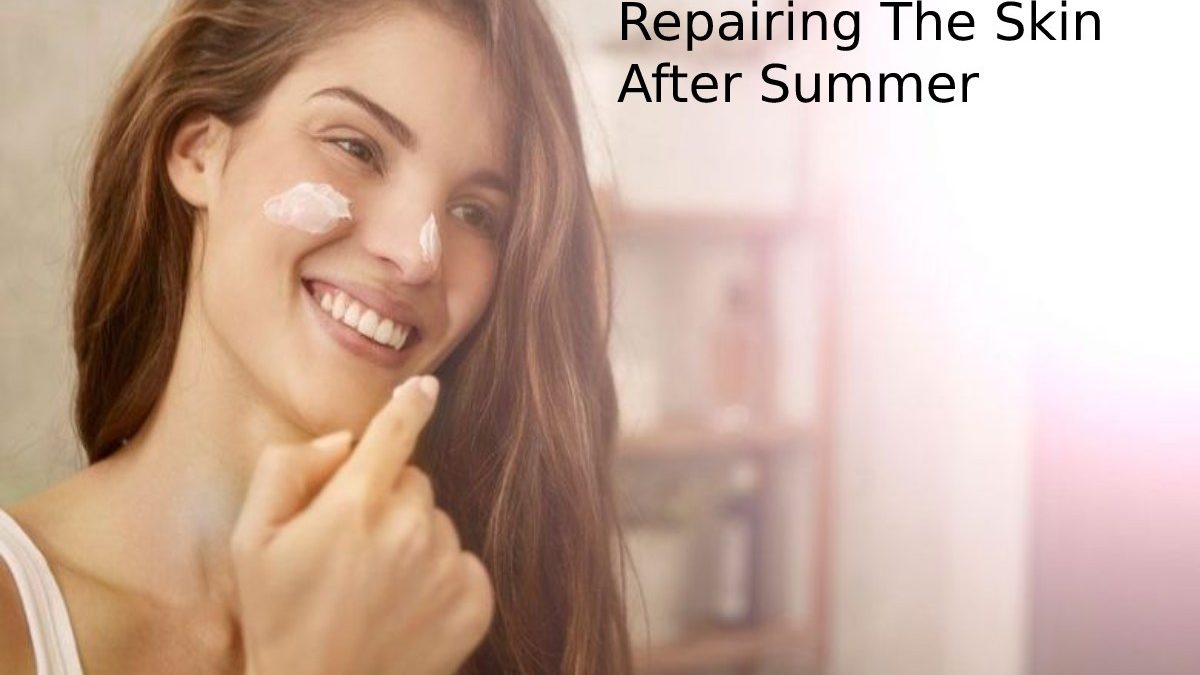Skin The Skin After Summer And erasing the spots caused by the accumulation of the sun are the two main objectives of the post-summer programs.
Cosmetics and professional advice combine to restore vitality to the face for a common goal to mend the skin.
The beauty of the skin is the reflection of optimal cell renewal. Damage from sun abuse leads to a dull, wrinkled complexion. Returning light is the obligatory mission of restorative and regenerating programs to recover the skin.
Table of Contents
How Skin Reprogramme
The skin is genetically programmed to develop its cell renewal. Although the skin is young and healthy, it renews itself quickly and efficiently produces collagen, but with maturity, it loses much of this ability. Although with age, its resistance and faculties decrease, reducing its ability to react to external agents: sun, heat, pollution. All of them affect it, weakening its capacity for cell reproduction.
While in young skin, this process takes about 28 days, cell renewal takes between 40 and 60 days in older skin. A curious fact is that keratinization causes ten gr. to remove daily. Of skin particles, approximately the equivalent of 20 kg is lost throughout life. keratin
Adenosine triphosphate (ATP) is skin cells’ most important energy carrier. This substance is responsible for the exchange of oxygen and, therefore, for the skin’s vitality. A young woman produces 75 kg. Of ATP per day, just the amount you consume. But as we approach our thirties, this balance begins to break, and the body no longer produces all the ATP it needs.
As a result of all this, the production performance of the skin cells decreases, which eventually reflects on the face. In fact, between the ages of 28 and 32, this process is manifested by more significant dehydration of the skin, a dull complexion and the appearance of the first expression lines. Over time, the number of young cells decreases even more and therefore, the new tissue that made no longer has the quality it had. Likewise, collagen and elastin fibers are impaired, and the skin’s ability to retain moisture decreases.
As a result of all this, regeneration ceases to proceed at a good pace. All these aggressions, internal and external, manifest themselves differently in the dermis and the epidermis.
Epidermis On The Surface Of This Layer Is The Stratum Carenum
Which acts as the skin’s natural barrier. This protective wall comprises powerful protein cells, held together by a kind of “cellular cement”, consisting of lipids and other water-resistant substances.
This cement is responsible for filling the intercellular spaces. And also which is essential to preventing the entry and exit of substances into the tissues. The skin’s well-being depends on the quality of the stratum carenum because the better its condition, the better it will perform its protective function.
A curious fact is that if it did not exist, we would lose 8.5 pounds of moisture per day. Harmful substances, including free radicals, can penetrate the skin unhindered, eliminating natural moisturizing factors and accelerating moisture loss. When external and internal factors weaken their barrier function, the cement that holds the outer epidermal cells together breaks down.
This Degenerative Process Is Dry, Dull, Tired, Aged And More Sensitive Skin.
The main objective of cosmetic regeneration is precisely to eliminate the dead cells produced by this natural process of keratinization from the skin’s surface, thus helping the skin present its best aspect and overflow with vitality.
Dermis We could define it as the mattress on which the epidermis rests. Its components, collagen, elastin, and hyaluronic acid, create a network of intertwined fibers and fluids, which maintains the skin’s level of hydration and support. The dermis also collaborates with the basal layer to create new cells, supplying oxygen and nutrients through the blood.
These nutrients come from food and absorb into the blood, transporting them to vital organs. Undoubtedly a long way before reaching the cutaneous tissue . And also which often does not receive the number of nutrients necessary to carry out its functions in optimal conditions. And also explains how important it is for the skin to receive these substances through cosmetic treatments.
Also Read: Joursnalist


